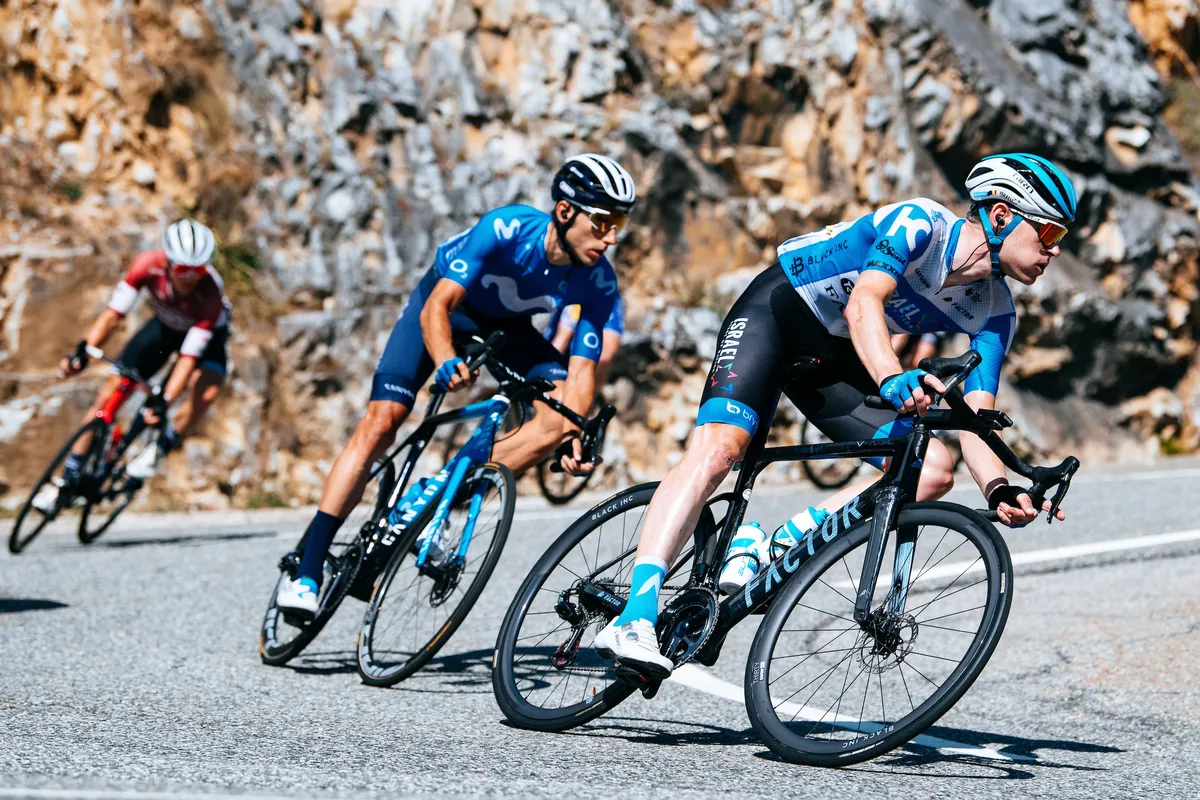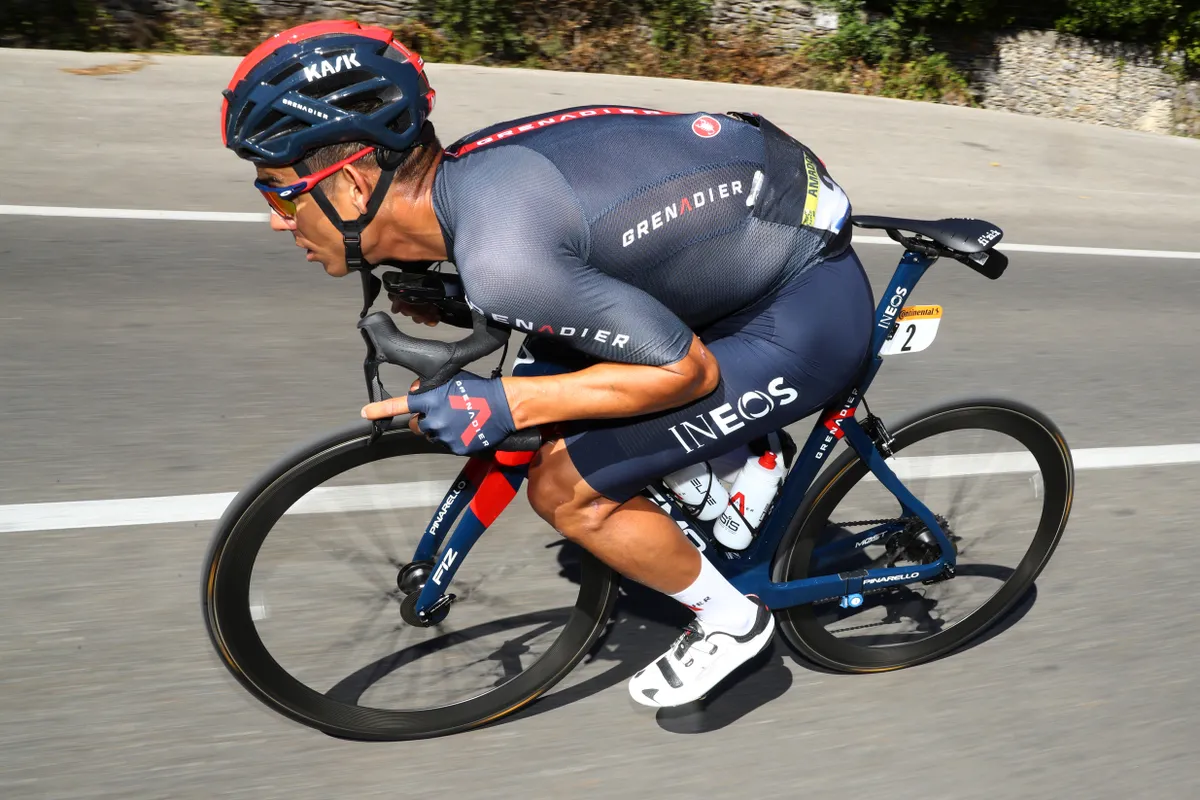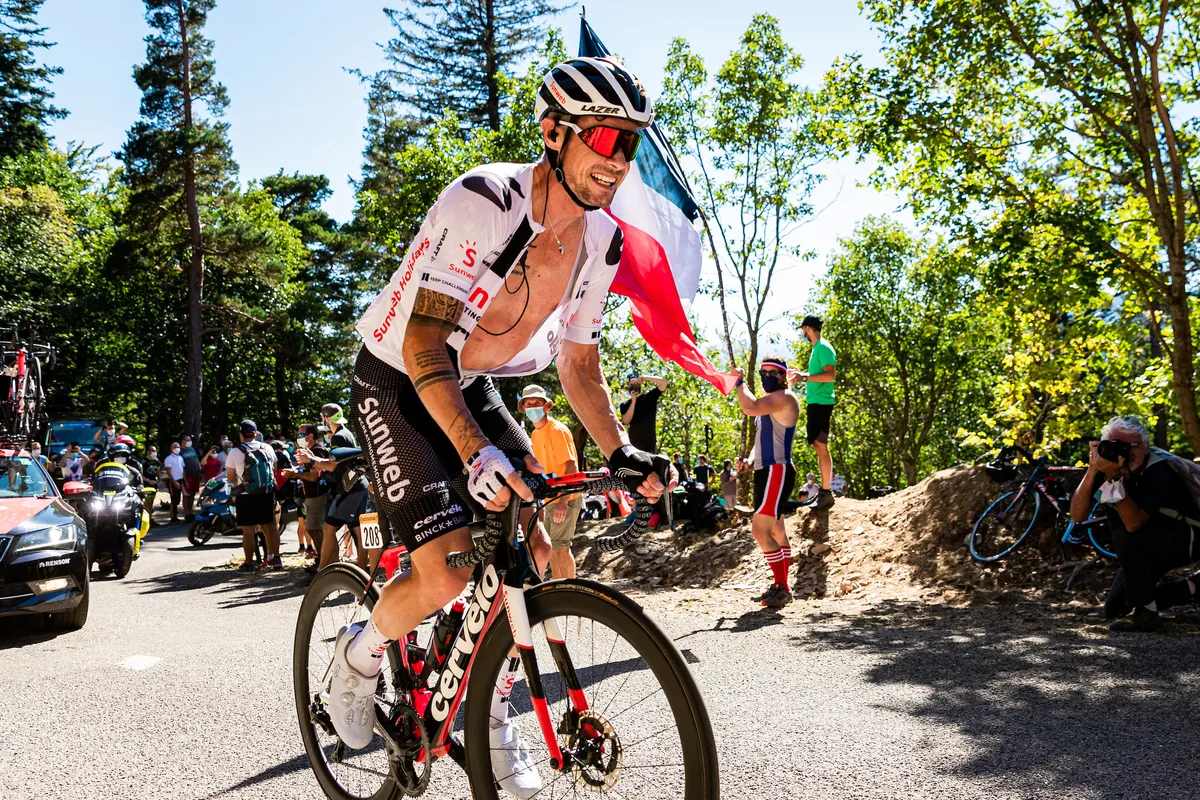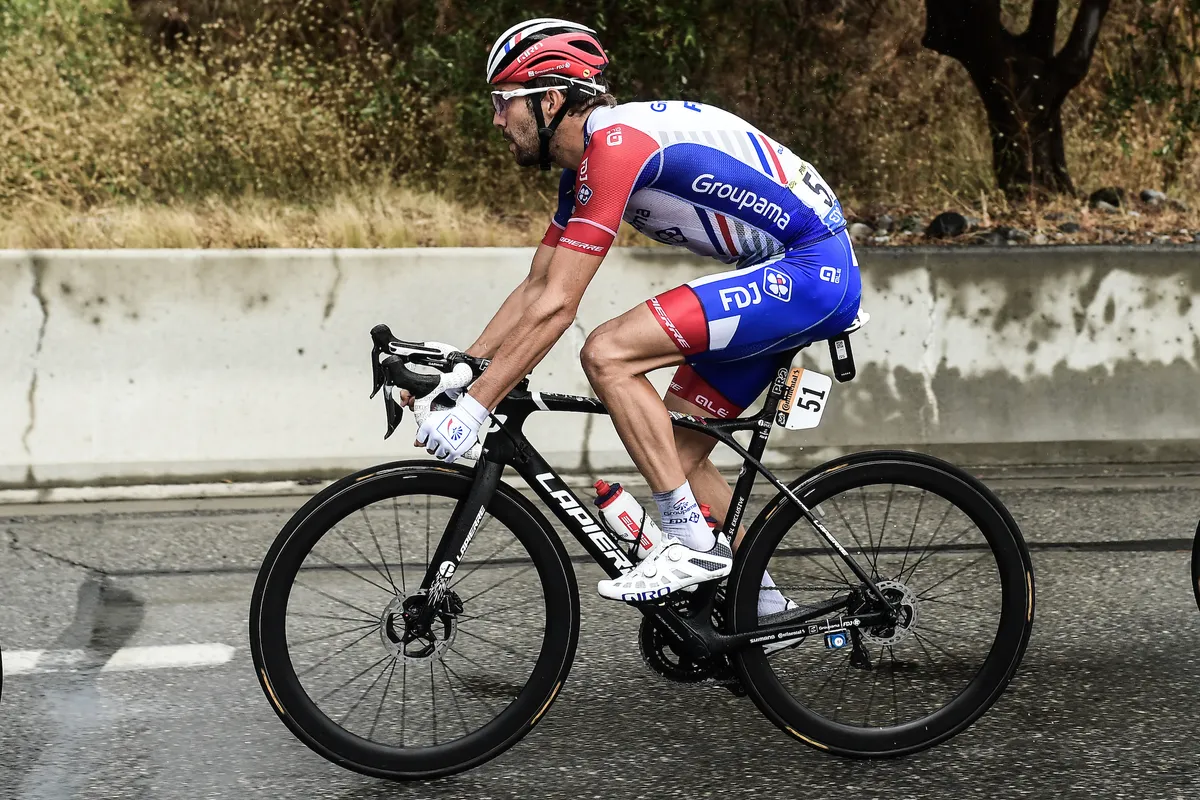The Tour de France is cycling’s most prestigious race and, more importantly for brands, the sport’s principal shop window.
Because of this, the Tour always sees huge amounts of new and interesting tech on display, as riders search for marginal gains and their sponsors search for maximum exposure.
Not everyone has time to watch all of the stages or comb through shots from the race photographers, so we’ve rounded up what we think are the most interesting bike, tech and silly tidbits from the opening week at the 2020 Tour de France.
Here’s what you can expect to see:
- The latest in aerodynamic bikes and kit
- Unreleased new bikes
- Lightweight tech
- Clincher tyres that are winning Tour stages
- New prototype wheels and components
- Bling parts and accessories
Aero is everything...
This has been a theme for a few years now, but there are very few bits of tech at the Tour de France that have escaped the beady eyes of aerodynamicists these days.
Frames, wheels and handlebars are almost universally sculpted to maximise aerodynamic efficiency. Cables have been squirrelled away inside handlebars, frames and forks.
Almost everyone is wearing aero kit now, with aero road helmets, aero socks and speed suits increasingly popular, even among climbers and general classification contenders such as Primož Roglič, Egan Bernal and Adam Yates.
The Ineos-Grenadiers team, renowned for its marginal gains philosophy, is even using speed suits with integrated number pockets, like the ones often seen on time trial skin suits, for another small aero gain.
We’ve seen appearances from new 2021 aero bikes, too, such as the Scott Foil, Factor Ostro and the unreleased Canyon Aeroad.
Chapeau to Team Sunweb rider Marc Hirschi as well. Riding a Cervélo S5 (with its futuristic aero frame and wild split stem design) with deep section wheels, and wearing plenty of aero kit, the former U23 world road race champion almost pulled off an incredible victory on stage nine.
He came excruciatingly close to holding off the four strongest riders in the race for a solo victory (and almost won in the sprint anyway), but his 90km solo breakaway made a convincing argument that an aero setup might be fastest even in the mountains.
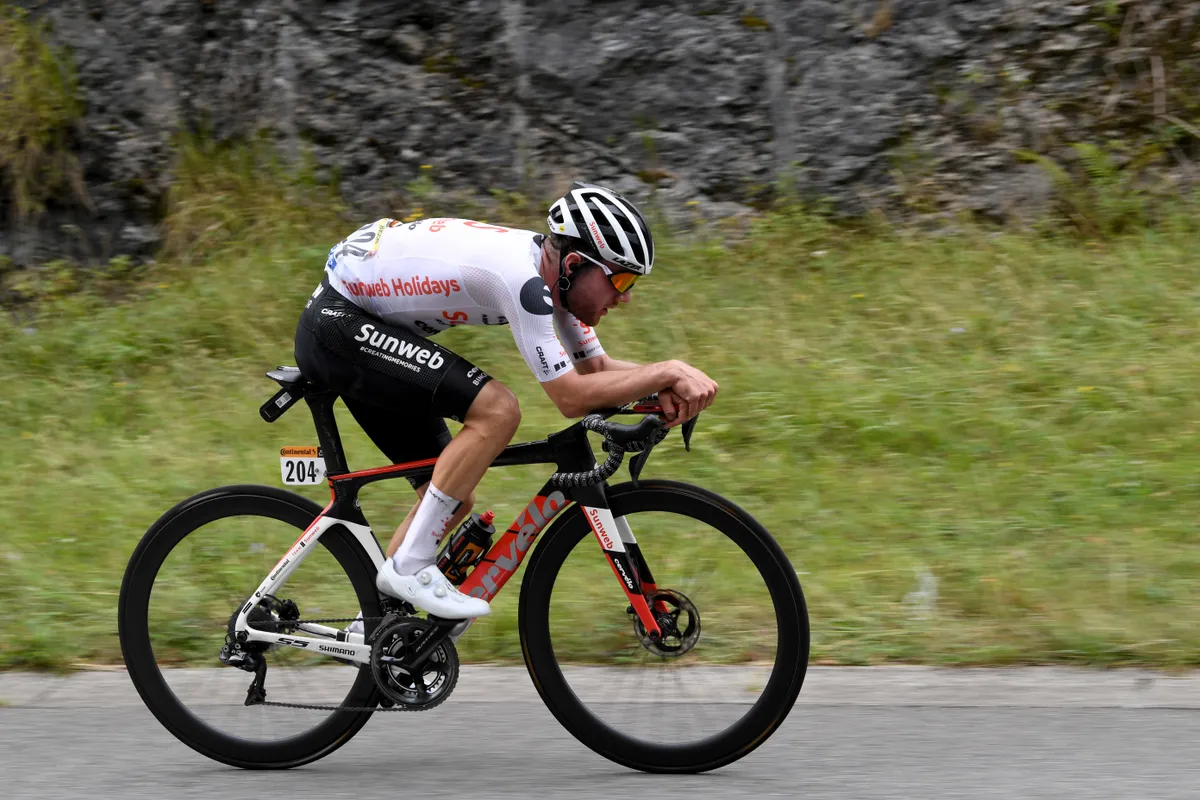
Spare a thought for AG2R La Mondiale though, the only team left riding a round tubed, non-aero optimised bike, the Eddy Merckx Stockeu 69. The French team does have access to the 525 Disc aero bike, but none of the team appear to be using it at this year’s Tour, perhaps (as we’ll come onto next) because of weight concerns.
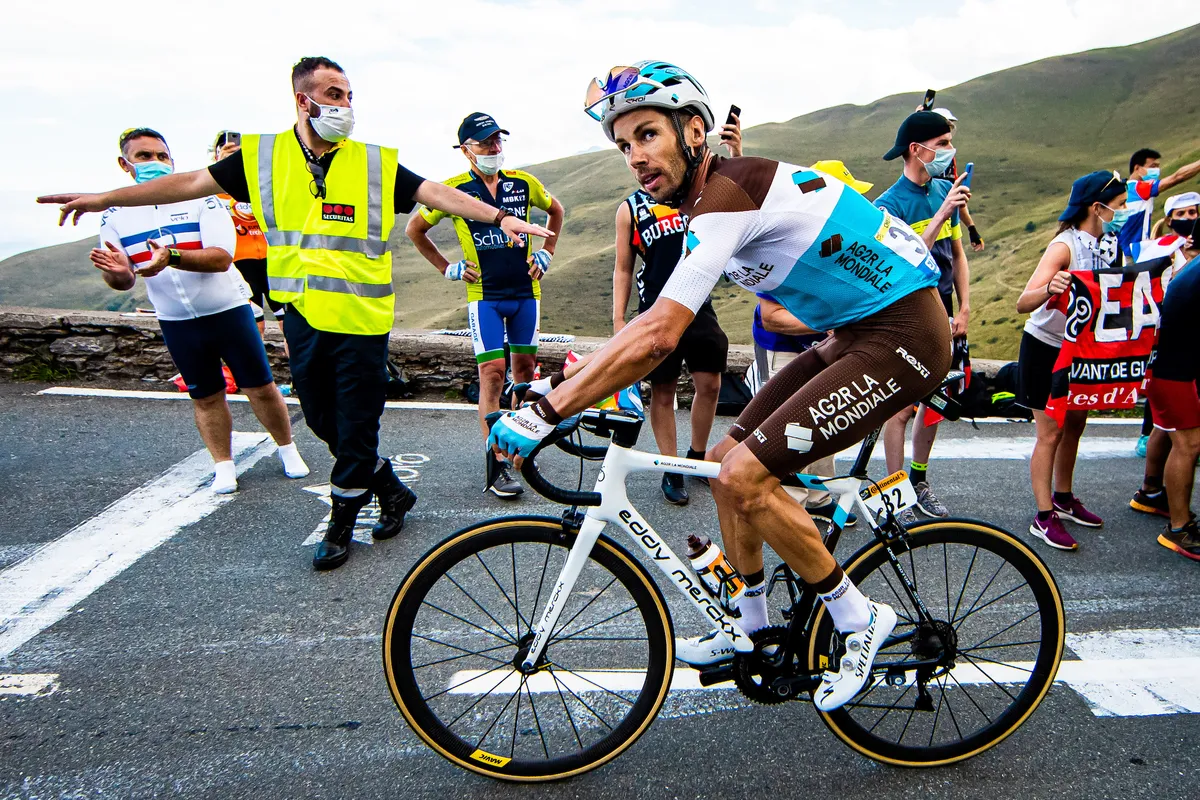
...as long as it’s lightweight
The big difference for this year’s bikes in particular is that a lot of aero bikes have gone on a diet, and the lightweight bikes have become more aero.
The Specialized S-Works Tarmac SL7 is a prime example of this trend. As feathery on the scales as the brand’s previous generation climbing bike (the S-Works Tarmac SL6 Disc), it is, according to Specialized, almost as aerodynamically efficient as its now defunct Venge aero road bike (though a special mention must go to Sam Bennett, of Deceuninck-QuickStep, who threw shade to the marketeers and rode a reanimated Venge on stage three anyway).
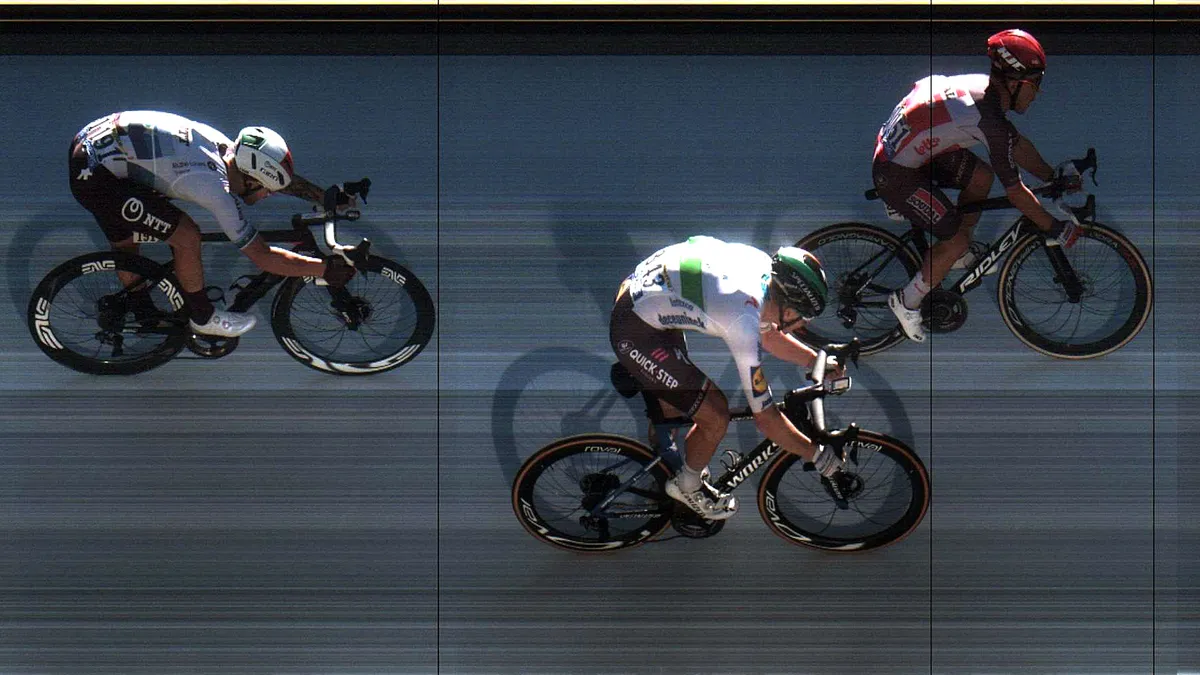
Likewise, Trek’s 2021 Emonda SLR has shunned its weight weenie credentials in favour of slightly heavier aerofoil tubes. Trek claims this aero optimisation can save a 70kg cyclist (averaging a fairly monstrous 350 watts) a claimed 18 seconds over the course of a favourite Tour climb, Alpe d’Huez. That said, the gains are likely much bigger when rolling along on flatter parcours at much higher speeds (because aerodynamic drag is proportional to square of speed).
At the opposite end of the spectrum, dedicated aero bikes such as the Merida Reacto and Trek Madone SLR have shed weight in their most recent iterations.
Team Jumbo–Visma riders have also been using specially painted versions of their Bianchi Oltre XR4 aero bikes. Though they would normally come in Bianchi's iconic Celeste, but extra paint equals extra weight (especially if it includes colour, which often means adding a white base coat to make the colour stand out), so Team Jumbo–Visma has been using frames with lighter, black paint jobs.
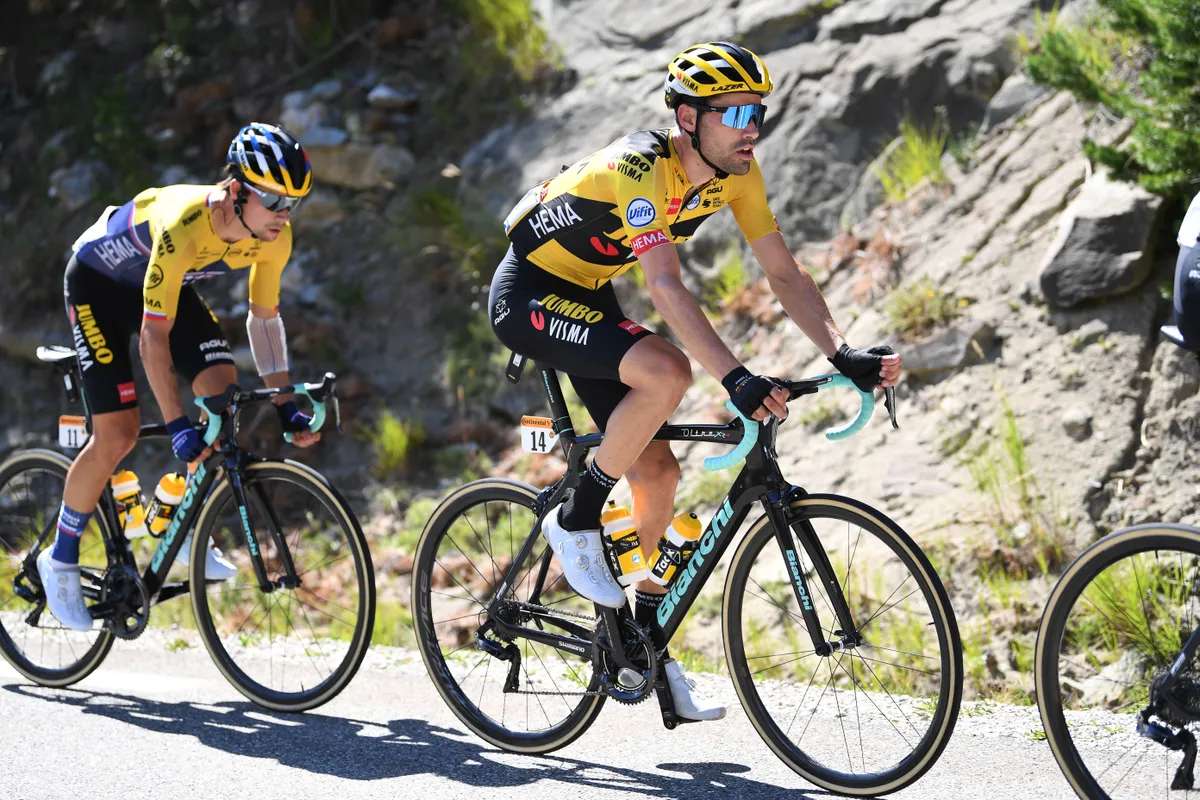
All of this this can largely be credited to the professional peloton’s almost fanatical collective devotion to all things lightweight.
No matter how many boffins tell teams the aero bike would always be faster over almost every course, it still appears that very few want to ride a bike over the UCI’s 6.8kg weight limit.
This is because, likely in the minds of the pro peloton, light equals fast. It always has and it always will (perhaps because professional cyclists are almost universally asked to starve themselves for much of their careers).
In further confirmation of this, we’ve also seen many teams using Shimano’s XTR-MT900 disc brake rotors instead of the standard Dura-Ace SM-RT900 rotors. Though we haven’t had this officially confirmed, we highly suspect it can be attributed to the fact that the XTR rotors are around 10g lighter per rotor. A truly marginal gain.
Could the tide finally be turning on tubulars?
Speculation has been rife for years that tubular tyre and wheel systems might finally be on the way out of professional cycling, but there weren’t many who were predicting humble clincher tyres would be making such a splash at the top of the sport this year.
While this isn’t necessarily a brand-new trend – Tony Martin was using clinchers to great success in time trials as far back as 2012 – it’s notable now because most industry insiders were expecting the next logical step for tyre technology in the pro peloton to be tubeless.
The traditional argument against clinchers (and in favour of tubulars) is that they can't be ridden while flat. Air within the inner tube is the only thing keeping a clincher tyre bead tight on a clincher rim, so there’s a higher risk the tyre will come off the rim when flat.
However, it looks like Specialized might have won over a few riders with the dual promise of lower rolling resistance and better aerodynamics, with its turbo cotton clinchers and new Roval Rapide CLX and Alpinist CLX clincher wheels.

It’s especially curious that one of the brands now pushing clinchers is Specialized, though, because at last year’s Tour de France it was very keen to extol the virtues of its S-Works Turbo RapidAir tubeless tyres. Clearly the jury’s still out on this subject, even within brands.
Elsewhere, other teams are continuing to experiment with tubeless technology. For example, Italian and European champion Giacomo Nizzolo is reported to be using Vittoria Corsa G2.0 TLR tubeless tyres on Enve 5.6 tubeless wheels on certain stages.
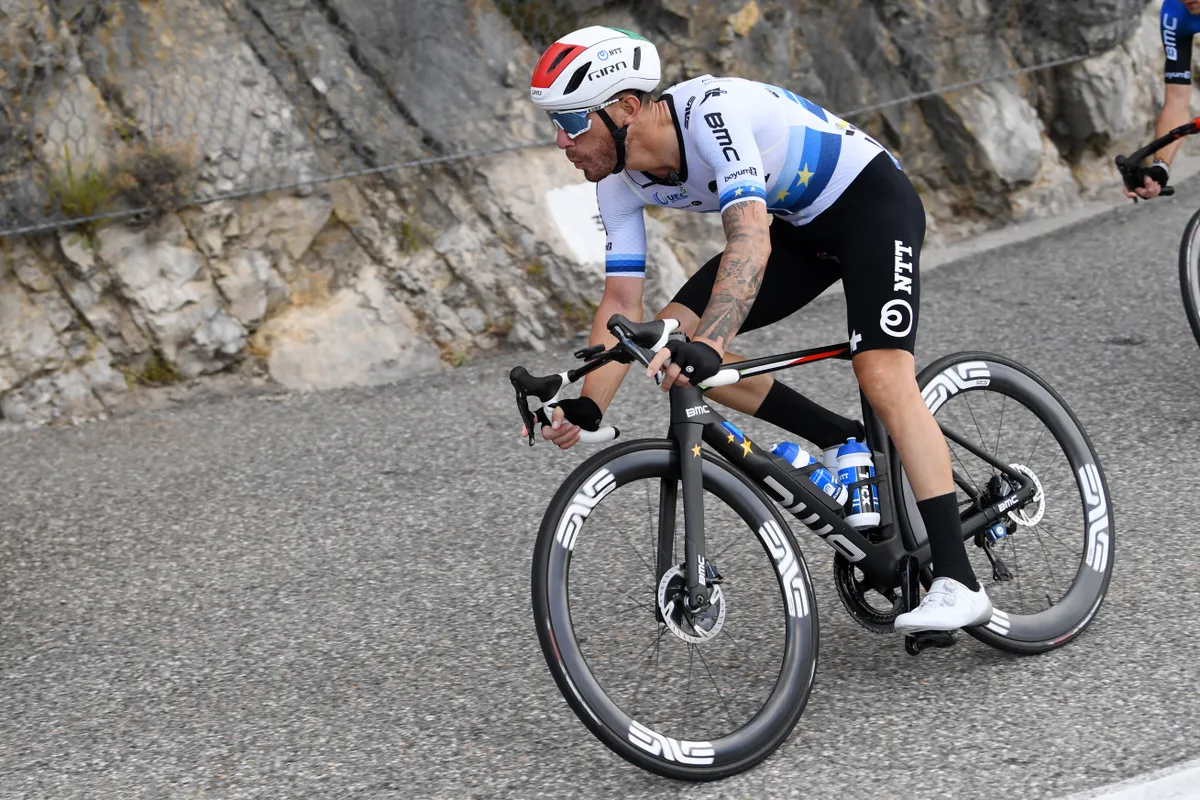
We also expect to see many more riders and teams using clincher or tubeless tyres and wheels in the upcoming time trial on stage 20, as they look for the fastest setups possible.
New stuff that you can’t buy yet
Although the UCI rules are supposed to ensure all equipment the pros use is publicly available, there is a grace period for using ‘prototypes’, so we always see a few things we can’t get our grubby little hands on just yet.
Among those are obvious things such as the aforementioned new Canyon Aeroad and Factor Ostro, but those looking closer will also notice new parts and components.
New mid-depth Shimano wheels?
Perhaps the most interesting of those is what appears to be a new 50mm carbon tubular wheelset from Shimano.
Whether this wheelset is part of the new Shimano Dura-Ace R9200 groupset (which we’re also hoping we might catch a glimpse of at some point during this race), or simply a late addition to the Dura-Ace R9100 groupset, remains unclear.
It is notable that Shimano is revising its wheel offerings, though. Recent times have seen Shimano-sponsored teams such as Ineos-Grenadier and Jumbo–Visma going rogue and using (possibly at great expense) ultra-lightweight wheels from brands such as Lightweight and Corima.
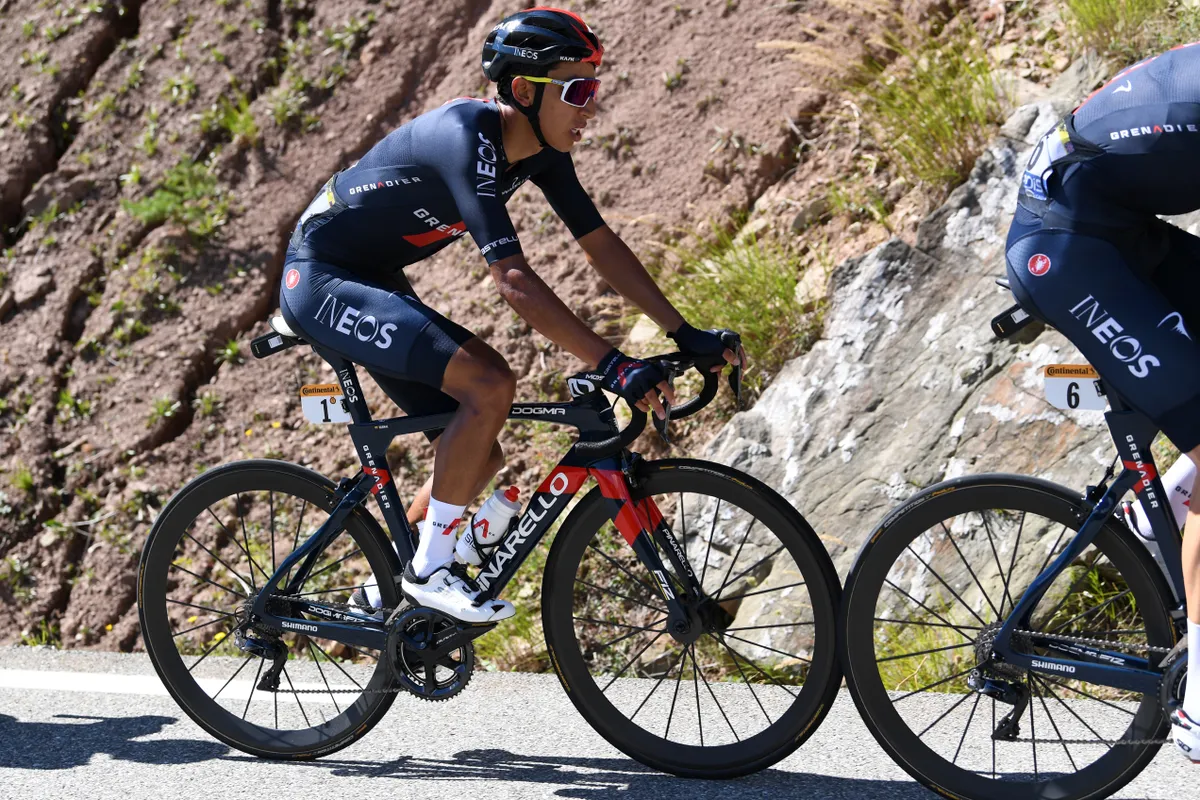
Although this latest wheel doesn’t appear to be optimised solely for weight parameters – it has 50mm-deep, wide, U-shaped rims after all – perhaps it aims to combine the aerodynamics of its C60 carbon wheels with the low weight of its C40 carbon wheels, and offer a compromise that more pro riders are happy with.
SRAM chainrings that are too big for your weak legs
In other ‘new-stuff-that-we-can’t-buy-yet’ news, many SRAM-sponsored teams and riders appear to be using larger chainrings than are publicly available for its RED eTap AXS groupset.
Currently, SRAM only lists 46/33, 48/35 and 50/37-tooth chainring combinations, but there have been many riders spotted using larger, more traditional 53/39-tooth chainrings (or other similarly sized combinations) at this year’s Tour.

The reason for this is, we suspect, more subtle than super-strong professionals simply wanting bigger gears. The 10-tooth cog on SRAM’s 12-speed cassettes ensures the riders have a very sizeable top-end gear, after all.
In our opinion, it’s most likely due to concerns about drivetrain friction. It’s well established that larger chainrings and larger cassette sprockets result in lower frictional losses (all other things being equal) than smaller ones, and though the marginal losses potentially present in SRAM’s latest drivetrains might be outweighed by the benefits of increased gearing range for amateurs, it’s perhaps not something the pros are willing to sacrifice.
Jazzy chains
On the subject of drivetrain friction, Astana and Israel Start-Up Nation are using CeramicSpeed’s Oversized Pulley Wheel System, which is publicly available.
But Julian Alaphillippe and Sam Bennett of Deceuninck-QuickStep were also supplied with custom, pro-only yellow and green CeramicSpeed UFO waxed chains (respectively) after they each took the general and points classification leaders’ jerseys during the opening week of the race.
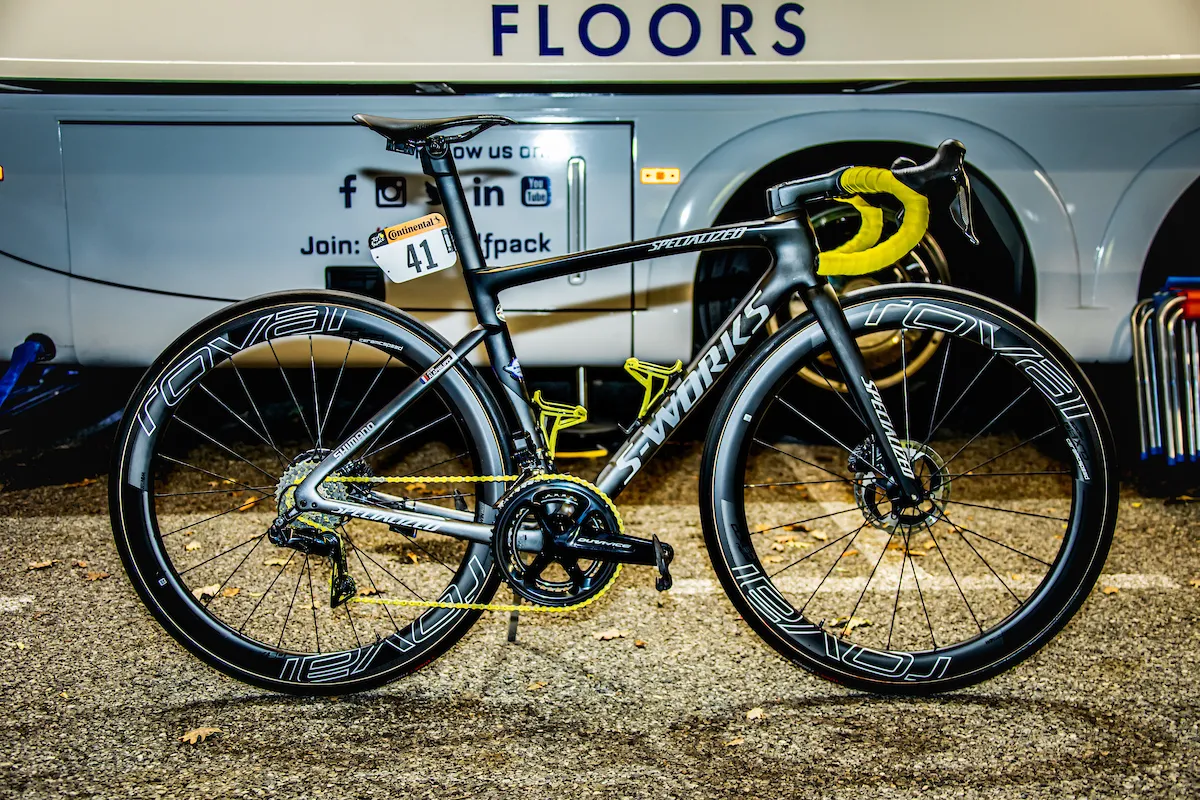
Bling is in
Though Michael ‘Bling’ Matthews may have been left out of the Tour de France by Team Sunweb, his spirit has nevertheless enlivened the race, with a number of pros rocking some outrageously ostentatious components and accessories.
The current leader of the bling classification has to be Julian Alaphillippe, who has been wearing a Richard Mille RM 67-02 watch while racing.
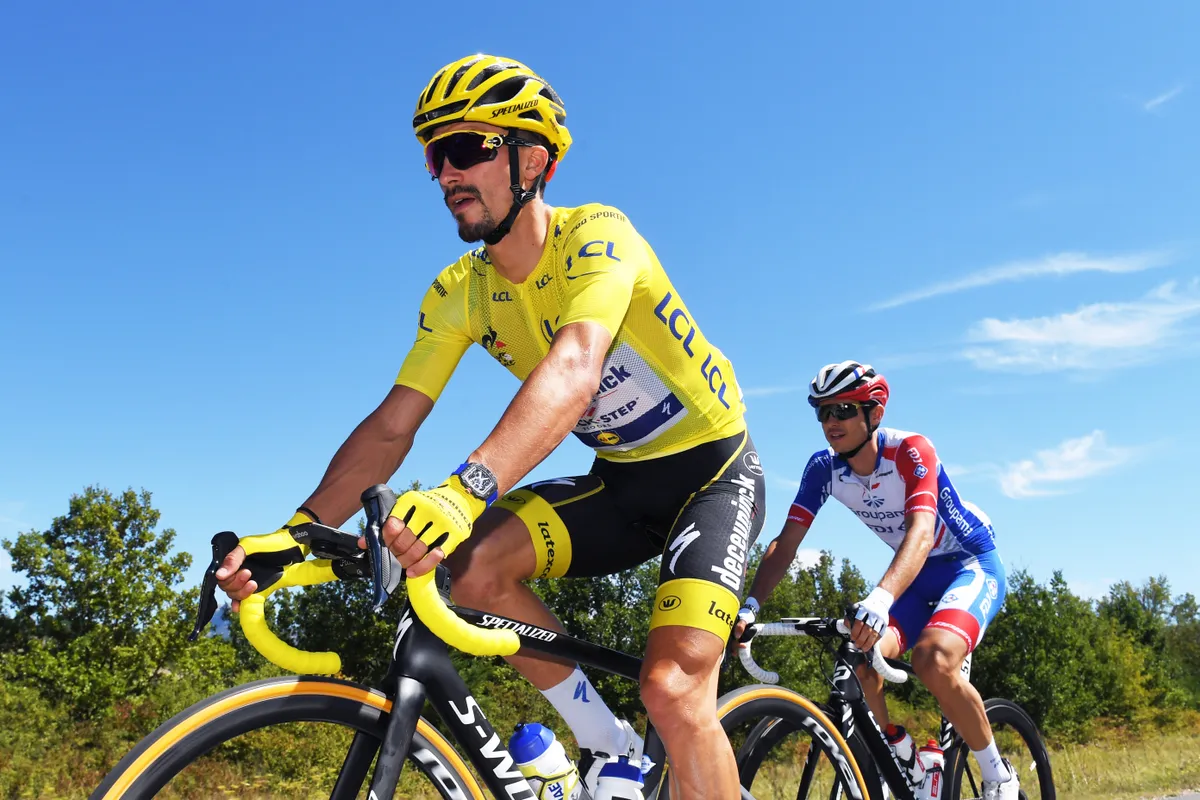
The watch doesn’t have any ‘smart’ features, but it is said to be the lightest automatic watch in the Richard Mille collection, at a claimed 32g. Yours for a very reasonable $120,500 (around £90,730 / €101,672).
A distant second would be Alexander Kristoff of Team UAE-Emirates, who wore a pair of diamond encrusted Scicon sunglasses on the podium after his victory on stage one. These were reported to be worth a mere €5,000.
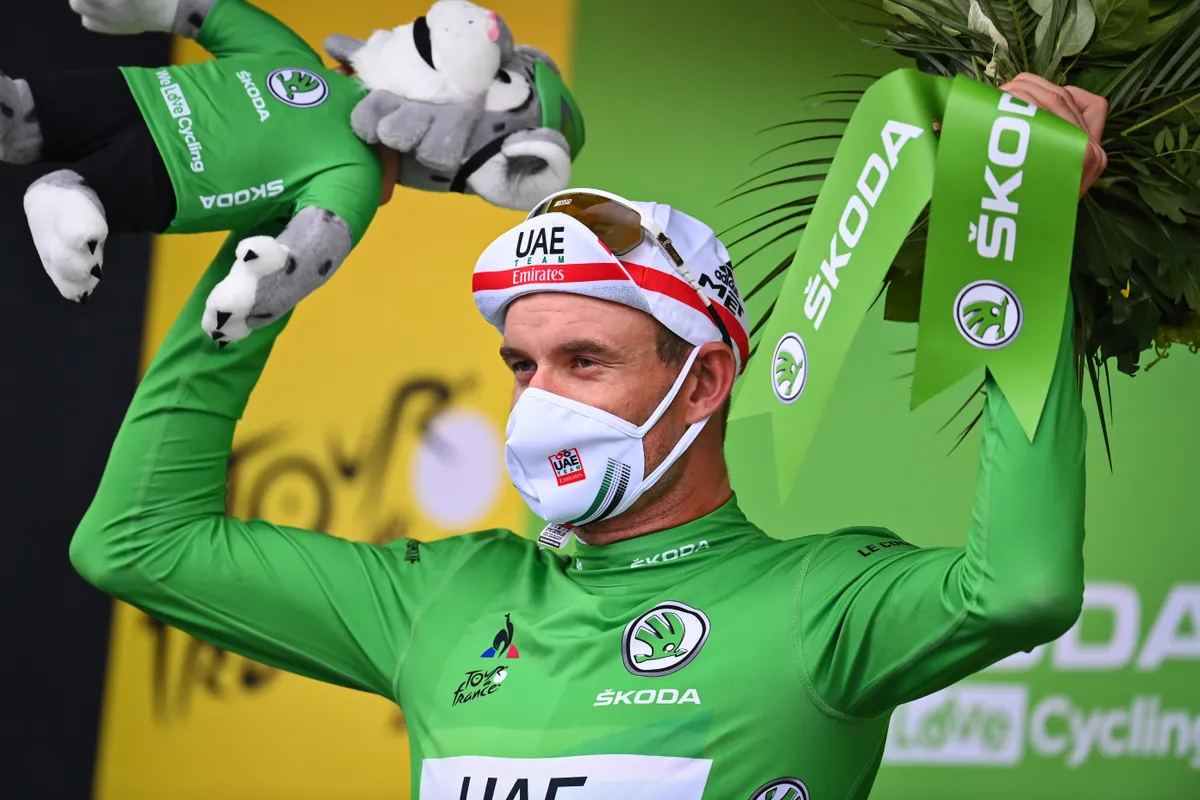
In third place we have Team CCC’s reigning Olympic champion, Greg Van Avermaet. Presumably in hope of reminding people of that 2016 victory in Rio, or perhaps just because he loves goooold (said in a Goldmember voice for maximum effect), he continues to use all manner of gold bikes and accessories.
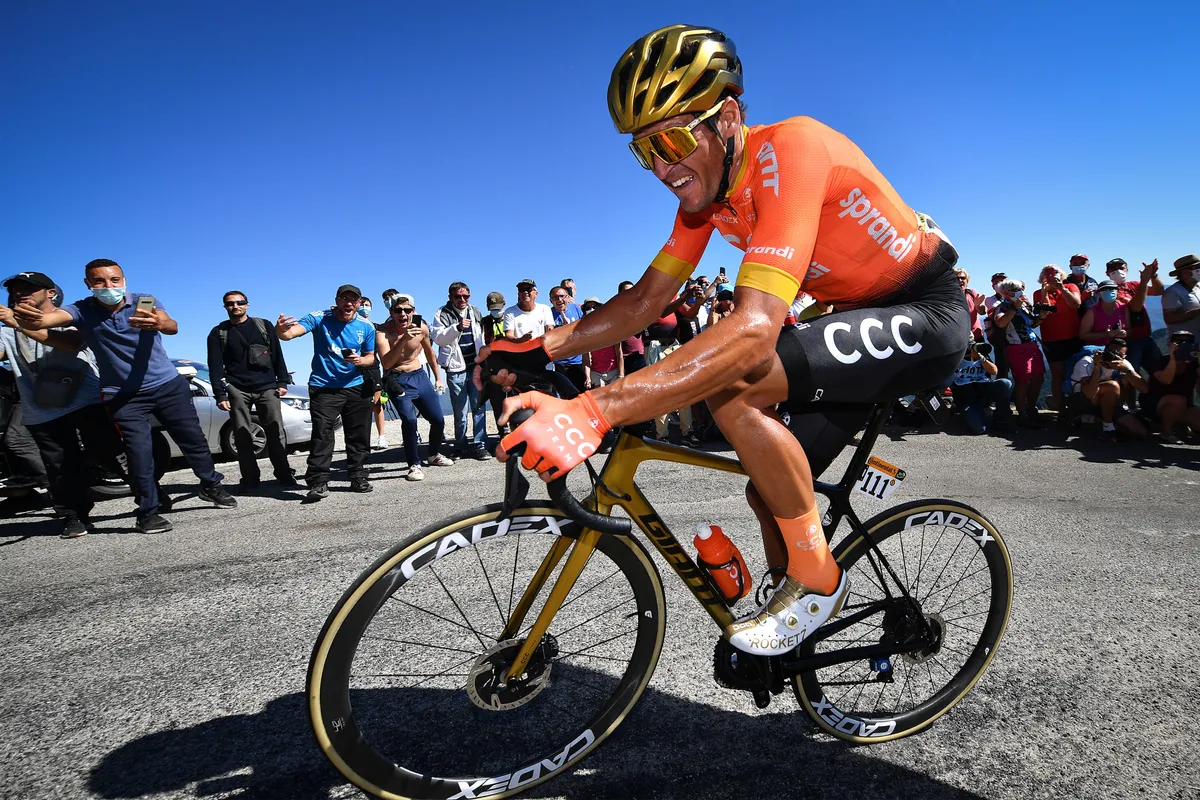
Unfortunately, we believe most, if not all, of Van Avermaet’s kit is simply gold painted rather than encrusted or solid gold.

